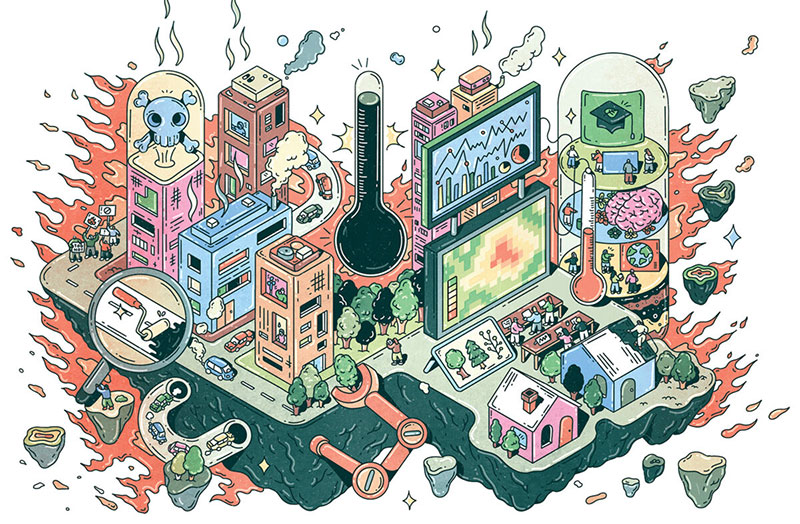During a particularly brutal Southern California heat wave in September 2020, the Fonseca house in North Hollywood wasn’t just uncomfortable. It was downright life-threatening.
The temperature topped 111 in some parts of Los Angeles. To then-17-year-old Jenifer Fonseca and her family, it seemed even hotter. “I put my shirt in the freezer,” she says. The heat and the humidity irritated her little brother’s eczema and was dangerous for her siblings’ diabetic father. The house is air-conditioned, “but it’s too expensive to have on all day,” she says, “so we only do it when it’s majorly hot.”
During oppressive heat waves, temperatures rise faster in big cities than in rural areas. But climate scientists are only just beginning to quantify dangerous spikes. Cities with heat-absorbing surfaces such as asphalt, buildings and dark roofs—and a deficit of trees and parks—create what is known as an “urban heat island effect,” zones in which temperatures are warmer than surrounding areas and are slower to cool at night.
